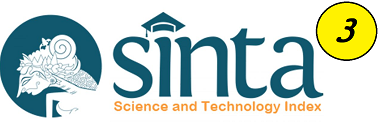Audio Steganography using Modified Enhanced Least Significant Bit in 802.11n
Abstract
Steganography is a technique to improve the security of data, which is by inserting messages or confidential information using a medium called the host or carrier or cover. A wide variety of digital media can be used as a host, among others audio, image, video, text, header, IP datagram, and so forth. For audio steganography, the embedded audio is called stego-audio. Steganography can be cracked by using steganalysis. By exploiting the weaknesses of each steganography method. Many steganography method has been developed to increase its performance. This work proposed audio steganography scheme called Modified Enhanced Least Significant Bit (MELSB) which is modified version of Enhanced Least Significant Bit (ELSB). This method using Modified Bit Selection Rule to increase SNR and robustness of stego-audio. SNR result after applying MELSB scheme is increased. MELSB scheme also increase robustness of stego-audio. MELSB still work fine until amplification level 1.07. MELSB also work fine against noise addition better than ELSB and LSB. It give BER and CER with value 0 at SNR 33 dB. MELSB work fine in real-time condition on 802.11n WLAN if there is no transcoding and noise addition between sender’s and recipient’s computer.
Downloads

This work is licensed under a Creative Commons Attribution-NonCommercial 4.0 International License.



















